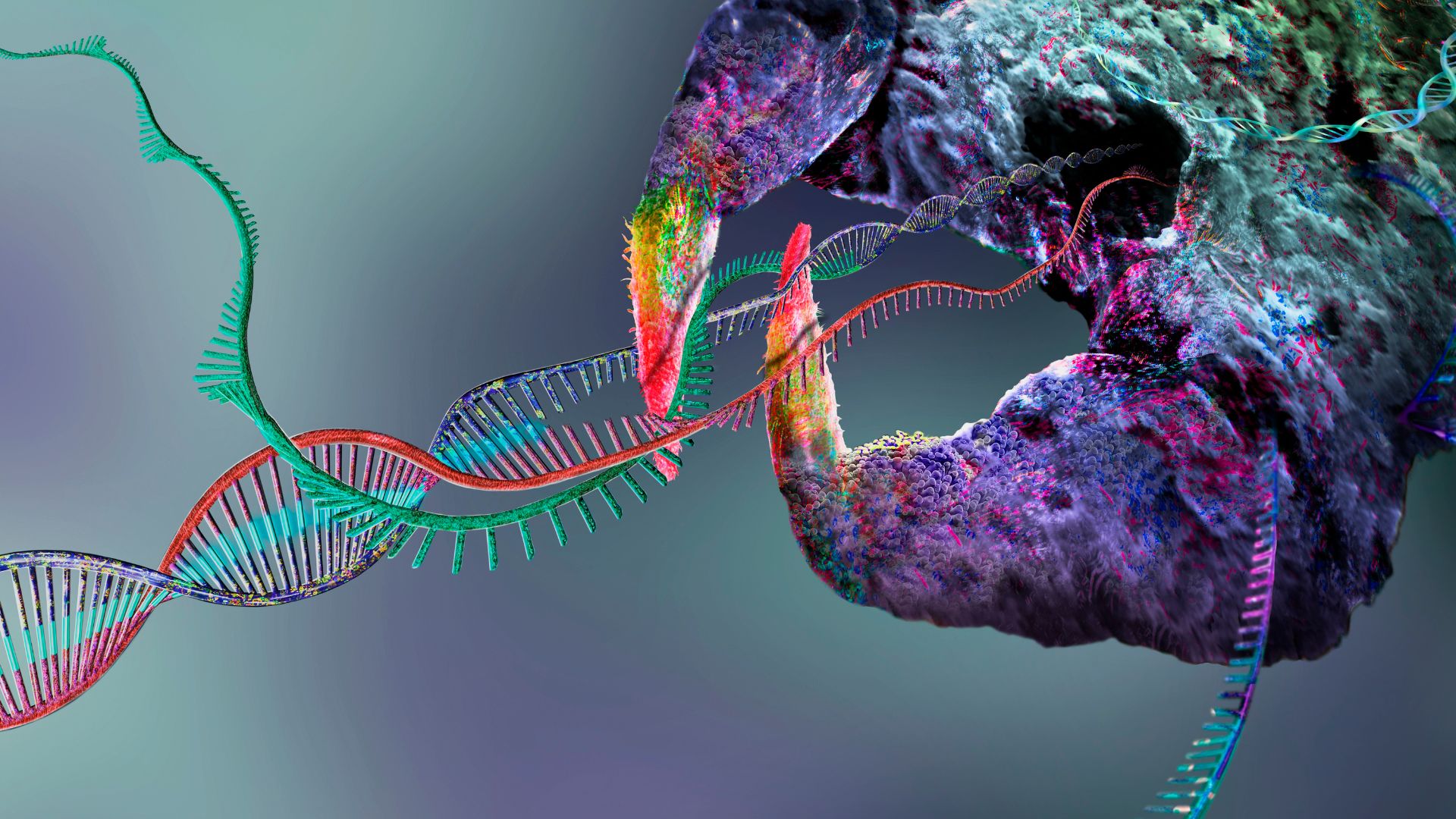CRISPR-edited fat shrank tumors in mice. Someday, it could work in people, scientists say.
Genetically modified fat can be transplanted into mice to shrink mouse and transplanted human tumors, but this novel cancer therapy still needs to be tested in human trials.

Editor's note: The study described below has now been published in the journal Nature Biotechnology. Live Science covered it as a preprint in 2023.
Fat sucked out of the body and tweaked with the gene-editing tool CRISPR could be used to treat cancer, a study of mice and transplanted human tissues hints.
However, it remains to be seen whether the experimental therapy would be safe and effective in people.
The new study found that "white fat" extracted from the body can be genetically reprogrammed to mimic "brown fat" and then introduced into rodents to shrink tumors. White fat stores excess energy in the body, while brown fat heats the body by breaking down blood sugar, or glucose, a function that could be used to deprive tumors of the nutrients they need for growth. The study tested this idea using white fat extracted from both humans and mice, as well as tumors transplanted from humans and mice.
The buildup of white fat in the body increases the number of cells that have the potential to transform into cancers, which partly explains why weight gain is linked to cancer risk. However, a 2022 study involving mice and one human cancer patient suggested that, although white fat is known to increase cancer risk, brown fat could actually shrink tumors. Cold temperatures pushed glucose absorption by brown fat into overdrive and starved the tumors of fuel, the research showed.
Related: A teen's cancer is in remission after she received new cells edited with CRISPR
The new study, which was uploaded to the preprint server bioRxiv on March 29 and has yet to undergo peer review, essentially harnessed this phenomenon in a novel cancer therapy.
Get the world’s most fascinating discoveries delivered straight to your inbox.
A team of geneticists at the University of California, San Francisco (UCSF) developed the therapy in mice and called it adipose modulation transplantation (AMT). The approach involves converting white fat into a brown-like "beige" fat outside the body by switching on genes required for "browning."
The team tested AMT in mouse models of breast, colon, pancreatic and prostate cancer, and found that beige fat implantation caused all of these tumors to shrink to half their size.
Nadav Ahituv, a professor in UCSF's School of Pharmacy and the senior study author told Live Science that AMT "could work very well with other therapies," but "more work needs to be done" to monitor whether the beige fat implants raise body temperature to feverish levels or cause other worrisome side effects. (Ahituv has filed a patent for AMT.)
Yihai Cao, a cancer biologist at the Karolinska Institute in Sweden who was not involved with the study, said AMT is a "very interesting approach" because, unlike most cancer therapies, it doesn't directly target the tumor, which is often difficult to reach. However, the "long-term impact on suppressing tumor growth remains to be seen," said Cao, who was the senior author of the 2022 cold exposure study.
Brown fat is normally located in the neck of mice and humans, but in Cao's 2022 study, tumors in the breast, skin and pancreas were suppressed despite being far from the fat. Ahituv and his team found that beige fat implanted into the back could have a similar long-distance effect, at least on breast cancer. In their other experiments, the team transplanted beige fat into mice near to transplanted tumors from the human colon, pancreas and prostate, so they still need to confirm that the fat can also exert long-distance effects on such tumors.
AMT was designed to be easily adopted in humans. White fat is commonly extracted via liposuction and reimplanted during plastic surgery. However, because cold exposure doesn't involve invasive surgery, it may be easier to adopt than AMT, Cao said.
But fat can be implanted during prearranged cancer surgeries, such as mastectomies, Ahituv noted. And gene editing is commonly used in gene therapy and a cancer treatment known as CAR T-cell therapy, so Ahituv doesn't expect the use of CRISPR in AMT to hold back the therapy's adoption in human patients.
AMT has only been tested in mice and in lab-cultured breast tumor samples from human cancer patients, so its efficacy and safety in humans can only be speculated until clinical trials are performed. Some studies suggest that, in cancer patients, brown fat may sequester nutrients away from healthy cells and contribute to cachexia, a wasting syndrome associated with the disease. The researchers didn't observe weight loss in mice over a six-week period — but Ahituv said cachexia could appear later, so longer studies are warranted.
Researchers will need to "figure out the amount of fat that we implant in each patient and how much is too much," Ahituv said. And it could be pertinent to remove implants after some time or to install a "kill switch" to stop them from sapping healthy cells' nutrients, he added.

Kamal Nahas is a freelance contributor based in Oxford, U.K. His work has appeared in New Scientist, Science and The Scientist, among other outlets, and he mainly covers research on evolution, health and technology. He holds a PhD in pathology from the University of Cambridge and a master's degree in immunology from the University of Oxford. He currently works as a microscopist at the Diamond Light Source, the U.K.'s synchrotron. When he's not writing, you can find him hunting for fossils on the Jurassic Coast.


